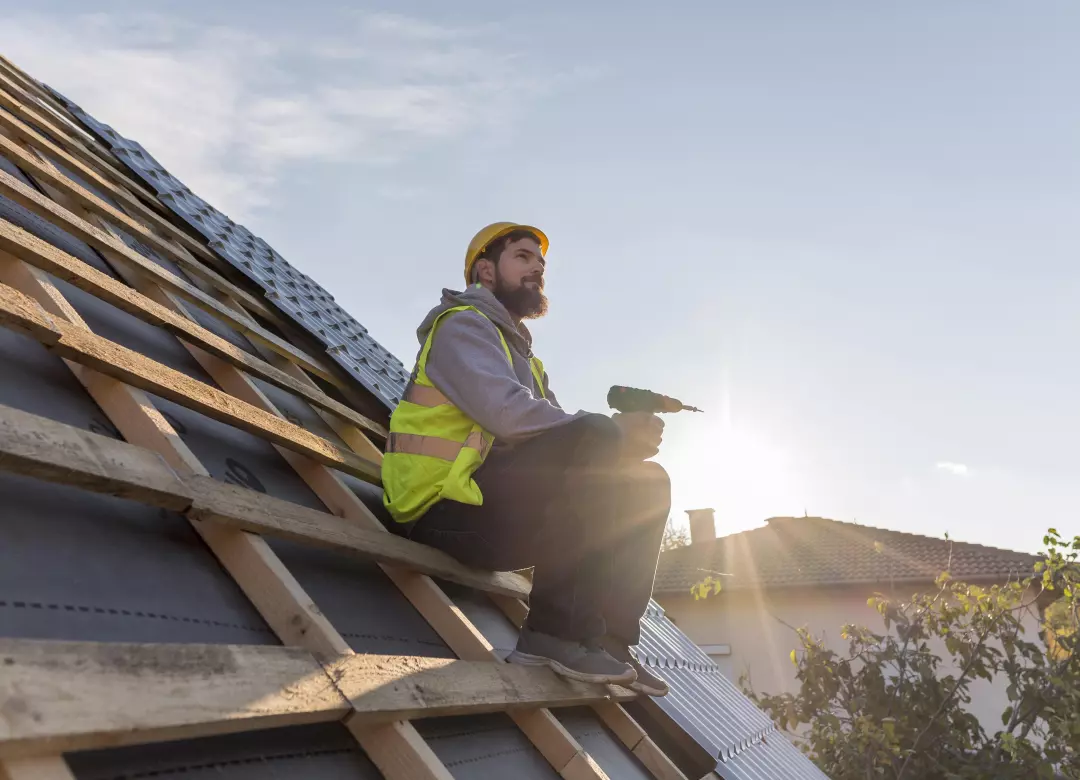What to Expect Throughout a Specialist Roof Installation Refine
Comprehending the professional roof installation procedure is necessary for house owners considering this significant investment. This procedure typically begins with a first assessment and an extensive inspection of the existing roofing system, setting the phase of what lies in advance. The contractor's strategy includes precise prep work of the worksite, making sure safety and effectiveness as the project unfolds. The nuances of each phase-- from the removal of old products to the last walkthrough-- can substantially influence the general experience and end result. What certain aspects should property owners be specifically attentive to during this important time?
Initial Consultation and Inspection
Prior to embarking on a roof covering installment project, an initial assessment and thorough inspection are critical. This preliminary stage establishes the structure for an effective roofing task, making certain that both the service provider and home owner are straightened on assumptions and needs. During the consultation, the contractor assesses the existing roof covering's problem, determining any type of underlying issues that may influence the installment process, such as structural damages, leaks, or inadequate air flow.
The inspection commonly entails a comprehensive assessment of the roof covering's products, pitch, and drainage systems. Roofing. This detailed analysis allows for the recognition of needed repairs that must be dealt with prior to continuing with the setup.
Preparing the Worksite
Once the preliminary consultation and examination are complete, the following action is preparing the worksite for the roof installment. This phase is critical to guarantee a secure and effective project. The roofer will certainly begin by removing the area around the home, eliminating any kind of barriers that might hamper the installment process. This consists of transferring outdoor furnishings, automobiles, and landscaping functions that can be harmed or obstruct accessibility to the roof.
Next, protective steps will be implemented to safeguard the building. Tarps or go down cloths are usually expanded on the ground to capture any type of debris that might fall throughout the installment, lessening damages to the landscaping and outside surfaces. Furthermore, the specialist will evaluate and safeguard any kind of necessary scaffolding or ladders to ensure the safety of the crew.
Security measures are vital throughout this stage; the group will make sure that all devices and equipment are organized and easily available. By carefully preparing the worksite, the roof contractor establishes the stage for a smooth installment procedure, eventually bring about a successful roofing project. This preparation phase is crucial for preserving efficiency and ensuring the safety of both the workers and the building.

Roof Covering Removal and Disposal
The process of roof removal and disposal is a crucial step in any type of roof installation task, as it involves the mindful taking apart of the existing roof materials. This stage generally begins with an analysis of the roof's condition and the recognition of any kind of potential threats, such as damaged outdoor decking or architectural concerns. Precaution are focused on, consisting of using individual protective tools and safe scaffolding to ensure the safety and security of workers.
Once the analysis is complete, the existing roofing products, such as shingles, floor tiles, or membrane layers, are methodically removed. This typically entails using specialized devices to remove the products without triggering damage to the underlying structure. Care is required to reduce particles and sound, along with to protect surrounding areas.
Disposal of the removed products is conducted in an ecologically responsible manner. Several professional roof covering business stick to neighborhood guidelines regarding garbage disposal and recycling, frequently repurposing products when possible (Roofing). Correct disposal not only straightens with sustainability practices however additionally ensures the worksite remains secure and well organized throughout the project. This precise strategy to roofing system removal and disposal establishes the structure for the successful installation of brand-new roofing products.
Installation of New Roof Covering Materials
New roof products are meticulously set up complying with the elimination of the old roof, making sure a sturdy and solid structure. The setup process starts with the application of an underlayment, which offers as a safety obstacle versus moisture and offers an moved here extra layer of insulation. It is crucial that the underlayment is laid out efficiently and firmly, with overlapping joints to prevent water seepage.
As soon as the underlayment is in place, the selection of roof product-- be it asphalt shingles, steel panels, or ceramic tiles-- can begin. Each product has specific installation standards that must be stuck to for ideal efficiency and durability.
Throughout this stage, experts pay close interest to information such as blinking setups around smokeshafts and vents to stop leakages. Proper air flow systems are also integrated to keep air movement and reduce warmth buildup, thus adding to the total efficiency and lifespan of the brand-new roof.
Final Assessment and Cleaning
A detailed final examination and cleaning are vital actions in the roofing installation procedure, ensuring that the freshly completed roofing system satisfies great post to read safety and security and top quality criteria. During the final examination, roof covering professionals will carefully take a look at every facet of the installment, including the positioning of tiles, the stability of blinking, and the total handiwork. This exam helps identify any possible problems that may have emerged throughout installation, enabling punctual adjustments.
Along with analyzing the roof itself, the evaluation also includes the bordering locations, making sure that debris, nails, and various other products are gotten rid of. A tidy worksite is essential to avoid accidents and maintain the visual allure of the residential or commercial property. Roofing groups will certainly typically use Get More Information magnetic tools to collect any roaming nails, securing both the home owners and their lorries from prospective risks.

Conclusion
In verdict, the professional roofing installation process includes numerous crucial phases, including first consultation, website prep work, roof covering elimination, and the installation of new materials. Understanding these steps gears up home owners with the knowledge to navigate the roof covering setup procedure successfully and with confidence.
